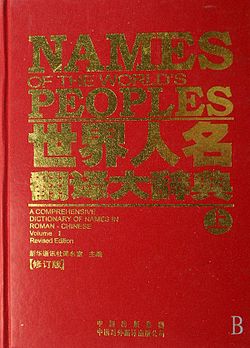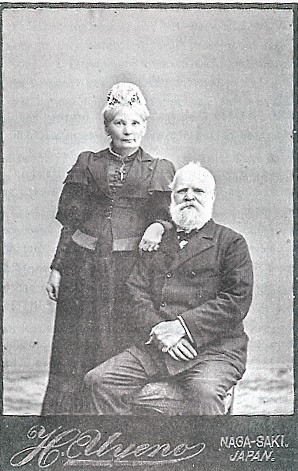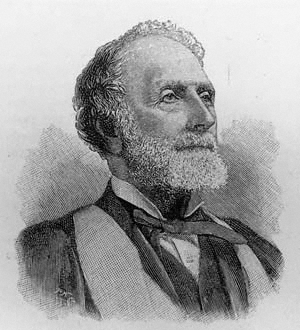
Herbert Allen Giles was a British diplomat and sinologist who was the professor of Chinese at the University of Cambridge for 35 years. Giles was educated at Charterhouse School before becoming a British diplomat in China. He modified a Mandarin Chinese romanization system established by Thomas Wade, resulting in the widely known Wade–Giles Chinese romanization system. Among his many works were translations of the Analects of Confucius, the Lao Tzu , the Chuang Tzu, and, in 1892, the widely published A Chinese-English Dictionary.

Cantonese is a language within the Chinese (Sinitic) branch of the Sino-Tibetan languages originating from the city of Guangzhou and its surrounding area in Southeastern China. It is the traditional prestige variety of the Yue Chinese group, which has over 80 million native speakers. While the term Cantonese specifically refers to the prestige variety, it is often used to refer to the entire Yue subgroup of Chinese, including related but largely mutually unintelligible languages and dialects such as Taishanese.

The Hongkong and Shanghai Banking Corporation Limited, commonly known as HSBC, was the parent entity of the multinational HSBC banking group until 1991, and is now its Hong Kong-based Asia-Pacific subsidiary. The largest bank in Hong Kong, HSBC operates branches and offices throughout the Indo-Pacific region and in other countries around the world. It is also one of the three commercial banks licensed by the Hong Kong Monetary Authority to issue banknotes for the Hong Kong dollar.

Bank of Communications Limited (BoComm), is the fifth-largest bank in mainland China.
The subgroups of the Han Chinese people are defined based on linguistic, cultural, ethnic, genetic and regional features. The terminology used in Mandarin to describe the groups is: "minxi", used in Mainland China or "zuqun", used in Taiwan. No Han subgroup is recognized as one of People's Republic of China's 56 official ethnic groups.

Sir Cecil Clementi was a British colonial administrator who served as Governor of Hong Kong from 1925 to 1930, and Governor and Commander-in-Chief of the Straits Settlements from 1930 to 1934.

The Cantonese people or Yue people, are a Yue-speaking Han Chinese subgroup originating from or residing in the provinces of Guangdong and Guangxi, in Southern Mainland China. Although more accurately, "Cantonese" refers only to Han Chinese with roots from Guangzhou and its satellite cities and towns, rather than simply and generally referring to the people of the Liangguang region.

Ernst Johann Eitel or alternatively Ernest John Eitel was a German-born Protestant who became a notable missionary in China and civil servant in British Hong Kong, where he served as Inspector of Schools from 1879 to 1896.
Standard Romanization is a romanization system for Cantonese developed by Christian missionaries in South China in 1888, particularly relying upon the work of John Morrison Chalmers. By 1914, it had become well established in Canton and Hong Kong and publications using it having been issued by the British and Foreign Bible Society, the China Baptist Publication Society, and the Pakhoi Mission Press from as early as 1906. It is the foundation of the current system of Romanisation used by the Hong Kong Government.

Transcription into Chinese characters is the use of traditional or simplified Chinese characters to phonetically transcribe the sound of terms and names of foreign words to the Chinese language. Transcription is distinct from translation into Chinese whereby the meaning of a foreign word is communicated in Chinese. Since, in mainland China and often in Taiwan, Hanyu Pinyin is now used to transcribe Chinese into a modified Latin alphabet and since English classes are now standard in most secondary schools, it is increasingly common to see foreign names and terms left in their original form in Chinese texts. However, for mass media and marketing within China and for non-European languages, particularly those of the Chinese minorities, transcription into characters remains very common.
The Lifan Yuan was an agency in the government of the Qing dynasty of China which administered the empire's Inner Asian territories such as Mongolia and oversaw the appointments of Ambans in Tibet. Until the 1860s, it was also responsible for the Qing's relations with the Russian Empire.

Joseph Edkins was a British Protestant missionary who spent 57 years in China, 30 of them in Beijing. As a Sinologue, he specialised in Chinese religions. He was also a linguist, a translator, and a philologist. Writing prolifically, he penned many books about the Chinese language and the Chinese religions especially Buddhism. In his China's Place in Philology (1871), he tries to show that the languages of Europe and Asia have a common origin by comparing the Chinese and Indo-European vocabulary.

Paul Georg von Möllendorff was a German linguist and diplomat. Möllendorff is mostly known for his service as an adviser to the Korean king Gojong in the late nineteenth century and for his contributions to Sinology. In English-language publications, Möllendorff is often credited with having designed a system for romanizing the Manchu language, which was in fact the creation of his compatriot Hans Conon von der Gabelentz

John Chalmers (1825–1899) was a Scottish Protestant missionary in China and translator.

Yau Lit, born Yau Kwai-bok (尢季博), courtesy name Tui-hau (推孝) or Ling-kwai (令季), or Euclid Yau, was a Chinese revolutionary from Shuntak, Kwangtung. He is one of the Four Bandits, together with Sun Yat-sen, Chan siu-bak and Yeung Hok-ling.
James Dyer Ball (波乃耶) was a Hong Kong scholar and author born in Canton. He is noted for works on Chinese culture and for contributing to the development of the system of Cantonese Romanisation.

Sir Thomas Francis Wade, was a British diplomat and sinologist who produced an early Chinese textbook in English, in 1867, that was later amended, extended and converted into the Wade-Giles romanization system for Mandarin Chinese by Herbert Giles in 1892. He was the first professor of Chinese at Cambridge University.

Ni is the Mandarin pinyin and Wade–Giles romanization of the Chinese surname written 倪 in Chinese character. It is romanized Ngai in Cantonese. It is romanized as "Geh" in Malaysia and Singapore, and "Ge" in Indonesia, from its Minnan / Hokkian pronunciation. Ni is listed 71st in the Song dynasty classic text Hundred Family Surnames. As of 2008, it is the 116th most common surname in China, shared by 1.4 million people.
T'ien Hsia Monthly was a monthly English-language magazine published in Shanghai from August 1935 to 1937 and in Hong Kong from 1937 to 1941. The editors of the magazine were ethnic Chinese, including editor-in-chief Wen Yuan-ning. Contributors included C. R. Boxer, Chuan Tsen-kuo, William Empson, Emily Hahn, Lin Yutang, Shao Xunmei, and John C.H. Wu. The magazine's purpose was to include works from Chinese writers introducing China to the west and works from Western writers discussing their ideas about China. The Sun Yat-sen Institute for the Advancement of Culture and Education supported the publication. Kelly & Walsh was the magazine's printer.

Byron Brenan CMG,, was a British diplomat who served in China from 1866. His last position before retirement was as British Consul General in Shanghai from 1899 to 1901.














